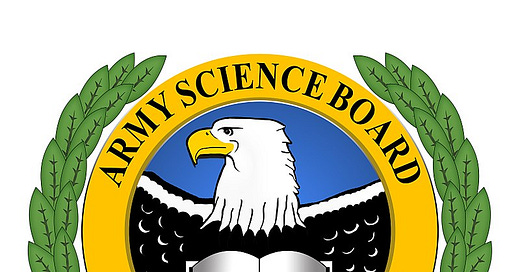Americans are explorers. Few periods of time revealed this identity as meaningfully as the early Cold War era. In 1960, for example, John F. Kennedy launched his campaign for the presidency with a vision for America’s “New Frontier”. A few years later, in 1966, Army Air Force veteran Gene Roddenberry gave Americans a way to see a version of this vision when he created the original Star Trek television series, with its story of “Space: the final frontier” and promise to “boldly go where no man has gone before”. Both men would go down in history as ushering in the pace age and a new era of American exploration. Yet the foundation for both the U.S. Space Program and Star Trek was forged not in utopian dreams of the future but the fires of war.
In 1945, Vannevar Bush, the war-time head of the Office of Scientific Research and Development, published a report titled Science: The Endless Frontier. In the report, Bush called for peacetime continuation of the collaboration among science, industry, and the military made necessary by World War II. While post-war budget cuts would initially curtail much of what Bush called for, his report would ultimately bear fruit. The National Science Foundation (NSF) was born in 1950 and continues today. Similarly, in 1951, the Army created the Army Scientific Advisory Panel (ASAP), which gained permanent status in November 1954. In 1977, ASAP turned into the Army Science Board (ASB), which continues to this day to bring together scientists, leaders in industry, and military professionals to advise and improve the Army’s research and development among other matters.
Source: ASB.
In 2022, the Army Center for Military History put out a history of ASB. The ASB was at the forefront of improving Army technology during the 1950s and 1960s, helped the Army transition to an all-volunteer force in the 1970s, and played an integral role in the “second offset” of the 1970s and 1980s, developments that enabled the U.S. to gain the decisive military advantages deployed during the first Gulf War. Since the end of the Cold War, ASB has continued to play a unique role in driving the Army to effectively understand and integrate cutting-edge research and technology into all aspects of operations, from the digital and communications revolutions ushered into force in the 1990s to the ongoing effort to harness artificial intelligence.
Looking back across 70 years, it’s clear that with each phase of its work, the ASB also contributed to America’s broader scientific inquiry into the unknown. Its not for nothing that the history of ASB opens with a quote from Michael J. Bayer, chair of ASB from 1998 to 2002, who said, “The history of technology is the history of war, and the future of war is the future of technology.” The future of war is also the future of peace and thus the ASB’s work to ensure technological dominance and provide the Army with cutting-edge insights is relevant to all Americans, irrespective of one’s direct connection to the service.
So as we celebrate the ASB’s 70th birthday this month, let us look forwards, or perhaps skywards, to another 70 years of helping to sustain peace, prosperity, and the pursuit of the unknown.
Additional Resources:
Learn more about the Army Science Board here.
Be Part of Army 250
If you’d like to write a newsletter post, share an educational resource about the Army, or lift up an opportunity for people to connect with the Army (e.g., an event, story, etc.), please contact Dan (dan@army250.us).





